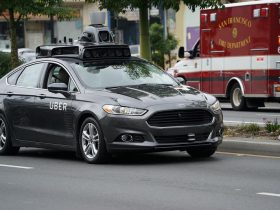By guest author Anil Niraula.
You might have already seen people whooshing by on e-scooters and e-bikes on the sidewalks of your city. The flood of dockless transport has caught many, including policymakers, off guard. And with growing urbanization and increasingly flexible work schedules, demand for sharing programs offering portable transportation services will likely only grow.
“[P]rocess of Creative Destruction is the essential fact about capitalism,” said Joseph Schumpeter, a 20th-century Austrian economist, who believed that the opening up of any new market, or industry, is inevitably followed by the destruction of the old and creation of the new economic structure. Indeed, the rising tide of so-called last mile solutions serves a testament to that.
A somewhat similar, although much less overwhelming, bike-sharing craze that hit China is now spreading over the states. Companies like Bird, Lime, Lyft, Skip Spin (owned by Ford), and others all rush to get a piece of the action. Many already operate an e-scooter and/or e-bike sharing services in more than 25 states and Washington, D.C. All this in a span of less than a year. In the District alone, under a pilot program started in 2017, the District Department of Transportation has recently approved permits for eight companies, which could potentially more than double the number of electric devices from 2,400 to 6,000 available for rent this year.
Legislators are rushing to catch up, many are starting to roll out reasonable laws ensuring safety (e.g. limiting the speed of e-scooters to 10-15mph) and limiting the growth of the fleet (i.e. imposing caps on the number of shared vehicles any one company can operate). Some jurisdictions, like New York City, are struggling more than others.
New York City all but bans electric bikes and recently kicked the tires on e-scooter programs. But, sometimes when local governments struggle, state legislatures can assist. Governor Andrew Cuomo’s proposed the fiscal year 2020 budget creates categories for both types of currently illegal vehicles, giving local authorities the power to legalize them if they wish. This could foreshadow New York City legalizing e-bikes and/or e-scooters later this year.
But while legislators are busy establishing boundaries for the young industry, the question remains whether this trend will last? Turns out, it may be here to stay.
“These e-scooters are being used. That tells you they’re filling a need,” said Douglas Shinkle, transportation program director at the nonpartisan National Conference of State Legislatures. Indeed, many, including the top managers like Paul White of Bird, believe that dockless transport helps cut down on commute times and makes streets safer.
This makes sense, given that three among the world’s 25 most-gridlocked cities are in the United States, according to the latest INRIX Global Traffic Scorecard. Last year residents of Boston, Washington, D.C., and Chicago spent more than 138 hours stuck in traffic. New York, Los Angeles, and Seattle are the next biggest culprits.
But, avoiding road congestion might not be the only reason why many prefer to hop on an e-scooter these days. In fact, the increasing number of young individuals that are moving to urban areas looking for work, and increasingly flexible work schedules are few of the other key drivers of this creatively destructive phenomenon.
It is no secret that the Millennial generation has helped define the “sharing economy” with flexibility and portability features at its core: from cloud storage to car-sharing services like Uber. Certainly, some of it comes from financial restraints and a reluctance for ownership imposed by the 2007-08 financial crisis. But, more importantly, it feeds on a desire to optimize work-life balance and to be more productive. Flexible work schedules fit right into these preferences. For example, a 2014 study from Nicholas Bloom, a professor at Stanford University, found that employees who worked at home had quieter environments, increasing their productivity by 13 percent.
Further data backs this up. In 2012, 24% of employees in America were spending 80% or more of their time working remotely, according to Gallup. By 2016, already 31% were found to be doing the same. This allows many to work and network from anywhere in the city. Classical cafés, bakery-cafés, restaurants—you name it—all become more inviting to those working on a laptop. The rise of shared workspaces like WeWork is another indicator of the trend.
All this creates a natural push towards more portable, short-range transport solutions like e-scooters and e-bikes, a trend that is likely to persist. The dockless scooters can be parked anywhere in the service area. All that new rider has to do is to simply scan them on their phone and start riding.
This kind of transportation solution is pivotal in helping younger workers cut commute time, optimize their day-schedules, and perk up their productivity, translating into more rapid economic growth. Given these benefits, these programs should not be crushed by unnecessary regulation. Policymakers should provide room for experimentation through pilot programs, while only cautiously enacting sensible laws that would truly ensure the safety of new riders.
To read more about e-scooters we recommend you to read this: Why are bike share companies pivoting to e-scooters?

E-scooters and E-bikes are redefining urban transportation
Posted by
Jimmy_Lecar
6 years Ago
24th July 2019
Shares
What’s your reaction?
Shares
Jimmy_Lecar














